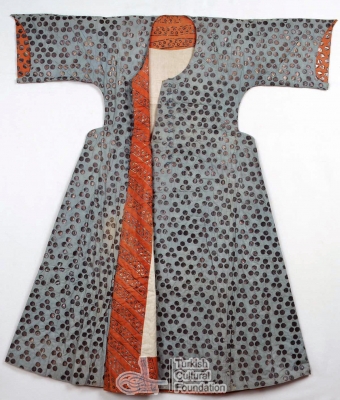The full-length robe worn by both men and women as a formal outer layer. Because the long skirts implied that the wearer didn’t do physical labor, men who wore kaftans were usually high-ranking, and/or had jobs with a certain gentlemanly aura. There are exceptions–some janissaries wore kaftans–but even those exceptions follow the rule that greater length = greater status. (Higher-ranking janissaries wore kaftans, but their inferiors wore calf-length or knee-length coats.)
While men had a variety of formal garments in a variety of lengths, women appear to have worn only kaftans. That makes sense, given male and female working conditions. Men usually worked in public, so they needed formal (= public) garments that they could haul rocks or bake bread in. Women, on the other hand, almost always worked in the privacy of their homes, where they could dispense with formalwear and work in their versatile hip-length zıbıns. The result is a clothing culture in which men expressed status through the length of their formal garments, while women’s formal garments had only one length.
Nowadays, “kaftan” is used for any Ottoman-era upper garment, regardless of how long it is or how it was worn. In the 16th century, the term was far more specific. A kaftan was (almost always) an inner robe, worn over the gömlek and zıbın and under the belt, NOT an outer robe worn as an overcoat. Overcoats had their own names–a bewildering variety of them. A kaftan was always full-length, which ranged from slightly above the ankle for commoners, to brushing the tops of the feet for sultans and viziers. Shorter inner robes also had their own names.




